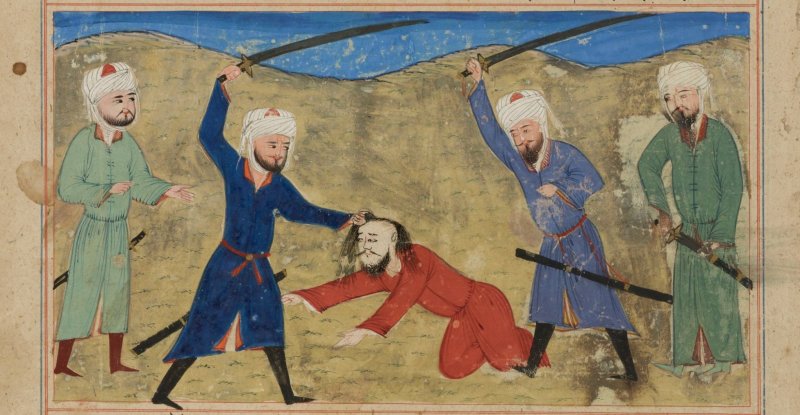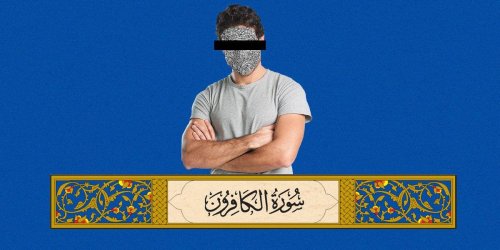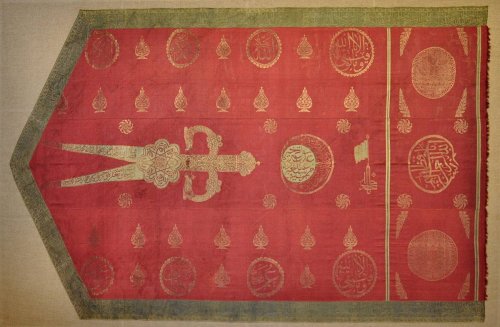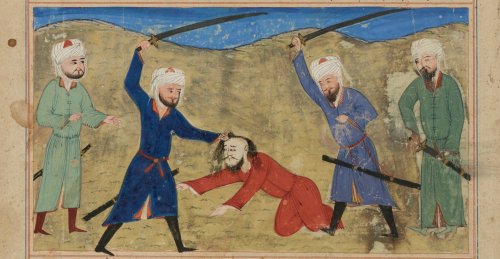In many a period during history, rituals of torture took on a legitimised and ‘sanctified’ form because of its attachment to religious establishments in a certain state or society, inevitably leading to questions surrounding the limits, controls and determinants which defined such ‘sanctified’ violence.
From the brutal Nebuchadnezzar II to the Age of Martyrs: Torture in the ancient age
The rulers of the ancient civilisations of the Near East which emerged in Egypt, Phoenicia, Babylonia, Assyriaand Persia often ordered the physical torture of their enemies, legitimising such violence by linking it to certain social values or ideologies prevalent at the time.
We are told in the Book of Exodus of the Old Testament, as well as a number of Qur’anic surahs of various types of heinous persecution practiced by the Pharoah of Egypt (which most scholars believe to be Ramses II) against the Israelites – having considered himself a divine or semi-divine king – who served as the early precursors for the exodus of the Jews from Egypt at the hands of the Prophet Moses.
Meanwhile the Second Book of Kings (also the Old Testament) speaks of the brutality of Nebuchadnezzar II, the king of Bablyon, and his torture of his Israelite enemies after he succeeded in invading their kingdom, subjugating their king (Zekediah) in the process:
“He was taken to the king of Babylon at Riblah, where sentence was pronounced on him. They killed the sons of Zedekiah before his eyes. Then they put out his eyes, bound him with brass shackles and took him to Babylon.”
Such gruesome practices were commonplace in the ancient Near East and were echoed everywhere, not least considering that displays of power and repressive violence were seen as the most effective and impactful methods of solidifying the hegemony of the ruling power. Thus it was not strange for historical sources to mention much of the atrocities that were especially committed by the Assyrians and Persians, which spanned the spectrum of death by fire, the pouring of molten copper on the heads of those being tortured, the cutting off of hands and legs, the gouging of eyes and the mutilation of noses.
On the opposite shores of the Mediterranean however, the socio-political environment differed much in the Greek states, where we find that cases of physical torture took place far less often relative to its equivalent counterparts in the Near East. Nonetheless, historical sources did mention a number of torture incidents in ancient Greece, the most famous perhaps being that recounted by Brian Innes in his “The History of Torture”; here, following a failed revolution against Nearchus the Tyrant, the philosopher Zeno of Elea (who had participated in the revolution) was subjected to severe torture, in an attempt to acquire information about his accomplices. Zeno refused to divulge such knowledge however – yet he announced that he did have a secret that Nearchus would like to hear. When Nearchus leaned in to listen to the secret, Zeno bit his ear and tore it off with his teeth.
So too were accounts of torture a recurrent theme in Roman history, especially after the complete transformation of the Roman (republican) system of governance to take on the form of the imperial Roman Empire. Emperors subsequently monopolised an almost-total and absolute authority of the Roman polity, leading to a marked increase in Roman torture – especially by crucifixion – of their enemies. The cross was initially a stake upon which the accused was fixed until they died of hunger, thirst and execution; it would evolve however to include a horizontal piece of wood on which the hands of the victim were nailed down.
Many of the Roman emperors would gain notoriety for their penchant towards torturing their enemies, notably amongst whom was the emperor Tiberius, who achieved a certain renown for forcing his victims to drink large quantities of wine before tying them together with ropes, putting pressure on their bladders and leaving them in excruciating pain. Meanwhile, his son Caligula tortured his victims by sawing off their body parts, offering them to predatory animals in combat games in the Roman arenas. Meanwhile the emperor Diocletian would also gain much infamy for his various and strange torture methods and tools by which he used to torture Christians across his empire – to the extent that his era became known in Christian literature as the “Age of Martyrs.”
On torture, the Prophet Mohammed Peace Be Upon Him said: "Do not torment the people, for those who torment people in this life will be tormented by God on the day of judgment".
Islamic doctrine has always refused to endorse torture by rulers and allowed society to determine adequate punishment.
Hudud: Can it be considered a manifestation of torture in Islam?
Simultaneous to the founding of the first Islamic state in Medina during the first year of the Islamic calendar, the Islamic punitive code – known as the Hudud (literally ‘boundaries’ or ‘limits) – emerged to the fore.
Many of these Hudud were tied to the concept of physical pain: as was notable in the punishments of lashing for fornication and the drinking of alcohol, the amputation of hands for categories of gratuitous theft, and crucifixion and cross-amputation (amputation of right hand and left foot) for the crime of Hirabah – which includes armed highway robbery (theft by highwaymen who stole from travellers), terrorism and rape.
Some of these punishments resembled those that came in Mosaic Tora-based laws implemented by Jews beforehand, while many were also well-known and widespread amongst pre-Islamic Arab tribes, as Professor Jawad Ali notes in his book “The Complete [Guide] in the History of the Arabs Before Islam.” When the Prophet Muhammad’s proselytising mission began, some of these rulings were adopted in the Islamic faith with new regulations, in accordance with the goals and intended ends of the Islamic Sharia.
There can be little doubt of the presence of physical pain in many Islamic Hudud, as is mentioned in the Qur’an regarding the punishment of lashing for fornicators in Surat al-Nur: “And let a section of the believers witness their torment.” (24:2)
It is important to note here that the primary goal of implementing Hudud in the early stages of Islam was comprised in its deterrential symbolism as well as serving as a form of repentance and repudiation (Mukafirat) of the sin being committed. Accordingly, physical torment was a path by which the sinner could once again return to the ranks of the believers – as evident in the famous story of the Prophet’s companion (and second caliph after his death) Umar ibn al-Khattab, who it was related had the blood of a Muslim adulterer touch him while he was stoning her – leading him to repine, as the Prophet had prohibited him from doing so and told him that God had pardoned her and forgiven her sin.
From this basis, many Muslim scholars have deduced that the goal of implementing Hudud is to reform the world for the better; as an example, the famous fourteenth century Syrian theologian Ibn Qayyim writes in his “Al-Hudud and Ta’zirat” (“Ta’zir” refers to discretionary punishments by a judge in cases where no punishment is specified in the Qur’an or Hadith – narrations of the Prophet Muhammad), that Hudud “legislated checks on souls and exemplary (deterrent) punishments and cleansing [for the soul]; it is a punishment valued for the sake of God almighty, and then for the good of the society; for God almighty ordained it on those that committed crimes which contradict human dispositions. It is amongst the greatest benefits in the interest of worshippers in this life and the next; thus, a king’s policy is not complete except by the checks and balances embodied in punishments for criminals, from which the disobedient is checked and the obedient comforted, and justice is achieved in the land leaving people secure over their lives, honoured possessions [Ird – often referring to women], and wealth.”
Islamic jurisprudence rejection of torture
The early Islamic orientation which viewed the punishments accompanying Hudud as a deterrent and expiation (atonement) of sin was soon altered with the expansion of Muslim states, and the imposition of their total control over Iraq and the Levant with bodily punishment transforming into an important tool of authority in the hands of caliphs and princes, who accordingly employed violence and torture against their enemies. Such a reality was borne out in the various forms of political torture exercised by Umayyad and Abbasid caliphs against their challengers, which began with beatings with sticks, whips and canes and ended with the ripping apart of bodies, spraying them with salt and exposing them to the sun, ultimately reaching the level of impalement, crucifixion, burning and the dismemberment of body parts.
On the other hand, it is to the credit of the body of Islamic jurisprudence and scholars that they refused to yield to the authorities’ request of total obedience and compliance, thus rejecting attempts to legitimise the aggressive political practices which were evident in the various forms of torture. Furthermore, the body of jurists opened the door of Ta’zir (discretionary rulings) to those that challenged the ruling authority, thus providing for the society the ability to evolve its punitive legal systems to suit the circumstances and exigencies (requirements) of every era.
Here, Muslim jurists invoked the Qur’anic precept of “No soul burdened with sin will bear the burden of another” (6:164 – translation by Khattab) in necessitating the separation of powers between the ruling political authority on the one hand, and the religious rulings of the Sharia on the other. So too was the Prophet’s statement “Seek obscurities [or doubts - Shubhat] to avoid punishment [Hudud].” This precept was followed by the second caliph Umar ibn al-Khattab, who deployed it at the heart of the public policy of the state, and was related to have said: “For me to suspend punishments [Hudud] with obscurities [Shubhat] is more beloved to me than to establish them with obscurities.”
Another founding text which lay at the heart of this jurisprudential orientation was the narration of the Prophet that came in the Sahih al-Bukhari (authentic collection of hadiths collated by the Muslim scholar Muhammad al-Bukhari) during his farewell pilgrimage (Hajj): “O people, your blood, your wealth and your honour are sacred to you as the sanctity of this day of yours, in this month of yours, in this land of yours.” So too does the Prophet’s narration recorded in the collection (Sahih) of Muslim ibn al-Hajjaj forbid the beating of a person in their face.
The example of Umar ibn al-Khattab was also invoked and cited by jurists, as when Umar was returning from the Levant and found a group of the ‘People of the Book’ (a Muslim term applied to monotheists, namely Christians and Jews) being held in the sun with oil being poured upon their heads. Umar is narrated to have said: “What is with these?”, to receive the response that they had not paid the Jizya (the tax on non-Muslim covenants living under the Islamic state), and were therefore being tortured until they did so. Umar asked: “What do they say and by what reason are they excusing [their non-payment of] the Jizya?”. They replied: “They say we have nothing!”, leaving Umar to reply: “So leave them and do not burden them with that they cannot tolerate, for I heard the Prophet Peace Be Upon Him say: Do not torment the people, for those who torment people in this life will be tormented by God on the day of judgment” leaving Umar to order their release – as Muhammad Jamal al-Din al-Qasimi relates in his Tafsir (exegesis) of the Qur’an, Hadith and accounts and opinions of Muslim scholars.
Accordingly, it is clear that most major jurisprudential writings encompassed a rejection of torture, as the jurist and judge Abu Yusuf – one of the most notable friends of the founder of the Hanafi school of jurisprudence, Abu Hanifa – writes in his “Book of Taxation”: “And no one of the people of the covenant are to be struck in the collection of the Jizya, not to be stood in the sun or otherwise, and not to leave any harm on their bodies; rather to treat them gently, imprisoning them until they satisfy their obligations.”
The celebrated judge and Andalusian philosopher Averroes affirmed this opinion in his book Al-Bayan Wa-al-Tahsil, declaring: “It is not permissible to punish someone owed punishment except by lashing and imprisonment that was delineated in the Qur’an, as for torturing someone outside of these it is impermissible and invalid.”
As for the fourteenth century judge and jurisprudent of the Maliki school, Ibn Farhun al-Yaamari, he declares in his book “Enlightening Rulers in the Principles of Judgements and the Methodologies of Rulings” that Malik ibn Anas – the jurist and founder of the Maliki school – was asked about the permissibility of torturing thieves and covering their bodies with tar, only for Malik to refuse and declare: “This is not permissible, it is either the whip or prison.”
Raseef22 is a not for profit entity. Our focus is on quality journalism. Every contribution to the NasRaseef membership goes directly towards journalism production. We stand independent, not accepting corporate sponsorships, sponsored content or political funding.
Support our mission to keep Raseef22 available to all readers by clicking here!
Interested in writing with us? Check our pitch process here!









